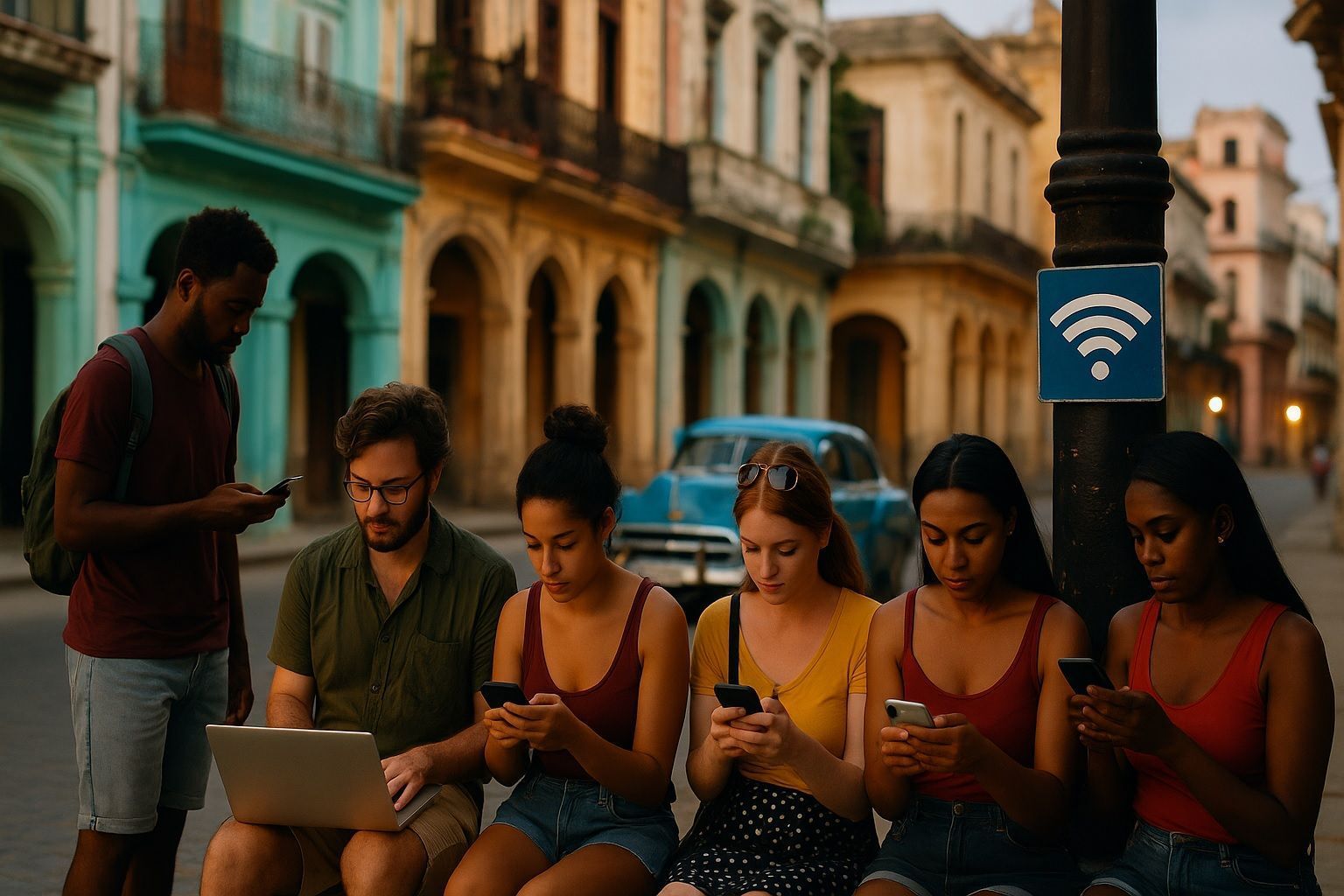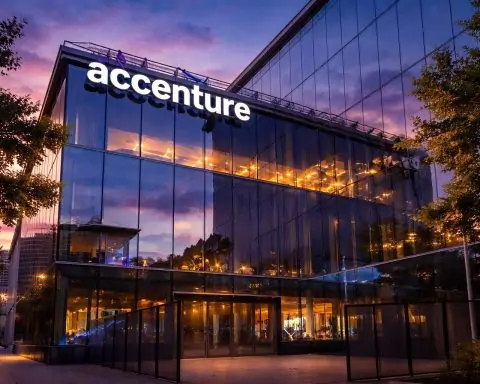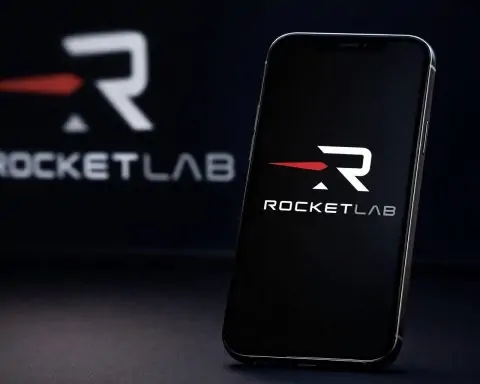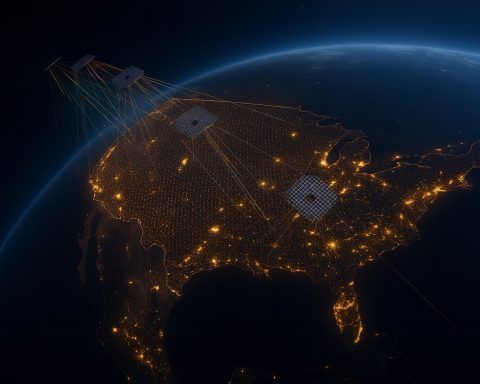- The first internet connection in Cuba was established in 1996 as a 64 Kbps link via Sprint in the United States.
- In 2011, with help from Venezuela, Cuba installed the ALBA-1 undersea fiber-optic cable, which became publicly usable in January 2013, replacing the old satellite backbone.
- From December 6–8, 2018, ETECSA rolled out mobile internet over 3G for Cuban cellphone users.
- By the end of 2019, an estimated 7.1 million Cubans were online in some capacity, as mobile data began to take hold.
- In 2023, the Arimao undersea cable, built with France’s Orange, was completed, linking Cuba to Martinique and tripling international connectivity versus 2021.
- By late 2023, about 282,000 households were subscribed to Nauta Hogar, roughly 7.23% of all Cuban homes.
- As of 2024, 4G/LTE coverage is about 50% of the population, with around 87.5% within 3G signal range.
- Public Wi-Fi zones expanded to over 1,600 locations by 2024, with access via Nauta prepaid accounts.
- In April 2025, Cuban customs seized about 20 Starlink dishes as the service remains illegal without government authorization.
- Cuba’s internet remains under ETECSA’s monopoly with a state-controlled intranet, and Freedom House rated it Not Free with a 20/100 score in 2023.
Historical Overview of Internet Development in Cuba
Cuba was relatively late to join the global internet. The first internet connection on the island was established in 1996 – a modest 64 Kbps link via Sprint in the United States [1]. Throughout the late 1990s and early 2000s, expansion of internet access stagnated due to a combination of factors. The post-Soviet economic crisis left Cuba with scarce funds for new technology, and the government was wary that foreign internet investment could threaten national sovereignty [2]. Additionally, the U.S. embargo made it difficult and costly for Cuba to acquire modern networking equipment [3]. During this period, internet access was tightly controlled: ordinary Cubans could not legally buy computers or cell phones without special permits until 2008 [4]. Before then, connectivity was largely limited to government institutions and shared public terminals, often running over slow satellite links that made access prohibitively expensive [5] [6].
Significant change began in the 2010s. In 2011, with help from Venezuela, Cuba installed the ALBA-1 undersea fiber-optic cable, its first fiber link to the global internet. After much secrecy and delay, ALBA-1 became operational for public use in January 2013 [7], replacing the old satellite-based backbone. This new cable dramatically increased Cuba’s international bandwidth (previously only a few hundred Mbps total) [8] and paved the way for wider access. In 2013, the state telecom ETECSA launched Nauta internet rooms where people could go online at government-run cybercafés [9]. By 2015, the government cautiously began opening public Wi-Fi hotspots – starting with 35 Wi-Fi zones in parks and plazas – and also cut the hourly price of access at state internet centers [10]. Although connectivity was still limited, these steps marked the beginning of a new era. In 2017, Amnesty International reported that an hour of internet cost $1.50 – exorbitant in a country where the average monthly wage was about $25 – underscoring how unaffordable and restricted access remained at that time [11].
A breakthrough came in late 2018: Cuba’s government rolled out mobile internet service for the first time. On December 6–8, 2018, ETECSA enabled full internet access over mobile data (3G) for Cuban cellphone users [12]. This was a watershed moment, as it allowed people to go online using smartphones without needing Wi-Fi parks or wired offices. By mid-2019, limited 4G/LTE coverage had also begun in urban areas [13]. The pent-up demand was enormous – by the end of 2019, an estimated 7.1 million Cubans (over half the population) were online in some capacity [14], a huge increase in a short time. The government also legalized private home Wi-Fi networks in 2019 (with a permit requirement) [15] and expanded a pilot program called Nauta Hogar to bring fixed internet to some homes via DSL. Overall, the late 2010s saw Cuba move from near-total offline isolation to a rapidly growing, though still tightly managed, internet environment.
Current Infrastructure and Service Providers
Cuba’s internet infrastructure remains under the monopoly control of ETECSA (Empresa de Telecomunicaciones de Cuba S.A.), the state-owned telecom company. ETECSA is the sole provider of internet and telecommunications services on the island [16] – there are no independent ISPs or private telecom firms. All connections, whether home, public, or mobile, ultimately run through ETECSA’s networks and international gateways. This centralized structure has allowed the government to closely oversee internet traffic, but it also means network quality and expansion depend entirely on a single, resource-constrained entity.
International connectivity: Cuba today is connected to the global internet primarily via two undersea fiber-optic cables. The longstanding ALBA-1 cable (laid with Venezuelan assistance) links Cuba to Venezuela (and Jamaica) and has been carrying most of Cuba’s traffic since 2013 [17]. In 2023, a second fiber cable named Arimao was completed in partnership with the French company Orange, connecting Cuba to Martinique (and thus to the regional internet backbone) [18]. The Arimao cable was hailed as a major upgrade – Cuban authorities claimed it tripled Cuba’s international connectivity compared to 2021 [19]. However, information on its impact has been sparse. As of early 2025 (two years after Arimao’s launch), everyday users have seen few if any improvements in speed or reliability [20] [21]. ETECSA’s president acknowledged that while the new cable is functional (reportedly operating at 80% capacity), Cuba’s domestic infrastructure hasn’t kept up – the country lacks enough cellular towers and networking gear to fully utilize the increased bandwidth [22]. In effect, Arimao added “more lanes to the highway” of Cuba’s internet, but it didn’t make the “cars” go faster for users without further internal upgrades [23]. Notably, four submarine cables actually land in Cuba, but two of them (the U.S.-owned GTMO-1 and GTMO-PR) only serve the Guantánamo Bay Naval Base and are not accessible to the Cuban public [24]. Political obstacles have prevented any direct fiber link between mainland U.S. and Cuba – even though Florida is only 90 miles away – as discussed later.
Within Cuba, the telecommunications infrastructure has expanded but still faces serious limitations. ETECSA has installed over 6,000 cellular towers (mobile base stations) nationwide to support 3G/4G service [25]. This number is relatively small for a country of Cuba’s size and terrain, resulting in spotty coverage in rural areas. Power blackouts are another physical challenge – Cuba’s electrical grid is unstable, and rolling blackouts often knock out cell towers, causing mobile outages until power returns [26]. The fixed-line network is also underdeveloped. Most home internet connections (Nauta Hogar) run on DSL over aging telephone lines, with limited capacity. By late 2023, ETECSA reported about 282,000 households subscribed to Nauta Hogar – only 7.23% of all Cuban homes [27]. This extremely low home broadband penetration is among the worst in Latin America (only Haiti ranks lower) [28]. The vast majority of Cubans who do use the internet therefore rely on wireless access – either at public Wi-Fi hotspots or via mobile data on phones.
ETECSA’s technological backbone has heavily relied on foreign partners. Due to U.S. sanctions, Cuba turned to China for much of its telecom hardware. Indeed, Chinese companies like Huawei, ZTE, and TP-Link have been key suppliers of ETECSA’s networking equipment [29]. Huawei, for example, has provided switches, routers, and perhaps even infrastructure for Cuba’s mobile networks since the 2000s. Analysts note that traces of Chinese technology are evident in Cuba’s internet system – a 2017 network audit found Chinese code in the login portals for Cuban Wi-Fi access points [30]. This foreign tech support has enabled Cuba to modernize its infrastructure to a degree, but it also raises cybersecurity questions (for both Cuba and the U.S., which views Chinese-built networks in Cuba as a potential espionage threat). Overall, the current infrastructure is a patchwork built via state planning, constrained investment, and geopolitical improvisation. It has achieved basic nationwide connectivity but struggles with poor quality – Cuba consistently ranks among the slowest internet countries in the world, with average broadband speeds on the order of only 2–3 Mbps for users [31].
Availability and Affordability of Internet Access
Availability: Internet access in Cuba has grown dramatically in the past decade, but coverage is still not universal. According to official data from 2024, about 71.2% of the Cuban population has access to mobile telephony, and 87.5% of the population is within range of a 3G signal, while 4G/LTE coverage reaches around 50% of the population [32]. This means half of Cubans (mainly in cities) can access faster 4G mobile internet, whereas others are limited to older 3G speeds or have no signal at all in remote areas. As noted, home broadband is only available to roughly 7% of households, leaving the vast majority dependent on wireless options [33] [34]. Still, by early 2024 the overall internet penetration rate (by any means) was estimated around 73% of the population [35], when including all who use the internet via mobile, work, school, or public points. This is a huge leap from a decade prior, making Cuba an interesting case of rapid internet adoption under constraints. However, “access” often means very limited access – many people can get online only sporadically or through shared means. For example, it’s common for one family member with a data plan to tether others, or for neighbors to share a home Wi-Fi signal, extending a single connection to multiple households informally.
Affordability: The cost of internet in Cuba is high relative to local incomes, which severely impacts availability in practice. ETECSA’s pricing is set in a complex mix of Cuban pesos (CUP) and MLC (a dollar-linked virtual currency), and many packages are only purchasable with foreign currency. In early 2025, a controversy erupted when ETECSA introduced new mobile data caps and higher fees. Under the new rates, the standard subsidized plan for Cuban students was capped at 6 GB per month for 360 CUP (roughly $1 at the informal exchange rate) – beyond that, an extra 3 GB would cost 3,360 CUP (about $9) [36] [37]. To put this in perspective, 3,360 CUP is over half of an average monthly state salary (≈5,839 CUP, or $16) [38]. For ordinary Cubans, such prices make a reasonable amount of data virtually unaffordable. Many other plans are offered only in US dollars or euros, explicitly targeting families abroad to pay for relatives’ service [39]. Indeed, ETECSA regularly launches international top-up promotions to capture remittances; a significant portion of Cubans’ internet usage is effectively funded by the diaspora sending money or recharge credits [40]. This strategy brings hard currency into the state’s coffers but means those without overseas support have a much harder time getting online.
Historically, internet access was even more prohibitively expensive. A few years ago, before mobile data arrived, Cubans had to buy scratch cards to log onto public Wi-Fi or internet cafés, often paying by the hour. In 2017 the price was around $1.50 per hour online [41], at a time when state wages were only ~$25 per month. That situation has improved somewhat – prices per MB have fallen and ETECSA introduced bundle packages – but internet still eats up a large share of income for those who need it regularly. The recent 2025 price hikes triggered such public anger that the government partially walked them back for some users (e.g. doubling students’ data allowance to 12 GB for the same price) [42]. The episode highlighted a tough reality: Cuba’s economic crisis is pushing the government to raise telecom fees to generate revenue, even as people struggle with inflation and shortages [43] [44]. Going forward, affordability remains a central barrier – the infrastructure might exist and signals might cover much of the island, but if the majority cannot afford sufficient data, true access is still limited. For now, many Cubans ration their internet use carefully, rely on offline media (like the “El Paquete” weekly offline content bundle) for entertainment, or depend on public hotspots where usage can be paid in smaller increments.
Government Regulation, Censorship, and Surveillance Practices
The Cuban government tightly regulates internet use, employing both technical censorship and legal persecution to maintain control over digital information. All internet traffic in Cuba flows through ETECSA’s state-controlled networks and gateways, which makes comprehensive monitoring feasible. The authorities actively monitor users’ online activities and have built a parallel Cuban intranet of approved content. Much of the population accesses a government-filtered network (sometimes called the “.cu intranet”) that hosts sites like EcuRed (a state-sanctioned Cuban encyclopedia) and national email, while the open global internet is only fully available to those with specific accounts or privileges [45]. Cuba’s internet environment is classified as “Not Free” by independent observers, consistently ranking among the most restrictive in the Western Hemisphere [46] [47]. For example, Freedom House’s Freedom on the Net 2023 report gave Cuba an extremely low score of 20/100, the worst in the Americas that year [48].
Censorship and content controls: The government blocks access to many websites that are critical of the regime, human-rights oriented, or independent. Both domestic and overseas news outlets that are not state-approved are commonly blocked. According to internet monitoring groups, dozens of sites (independent Cuban news, dissident blogs, circumvention tool sites, etc.) are inaccessible from Cuban IP addresses [49]. ETECSA also filters certain keywords in communications: even SMS text messages containing terms like “democracy,” “dictatorship,” “protest,” or “VPN” have been routinely blocked from delivery by the state’s systems [50]. Popular social media platforms (Facebook, Twitter, WhatsApp, YouTube) are officially accessible and widely used in Cuba, but the state keeps a close eye on them rather than outright banning them. In fact, analysts suggest the regime tolerates platforms like Facebook in part because it can data-mine them for surveillance and also because they generate revenue for ETECSA via data usage [51] [52]. However, during moments of crisis, the authorities don’t hesitate to cut connections entirely. There have been numerous internet shutdowns and throttling incidents coinciding with public protests or sensitive events. For instance, on July 11, 2021 – when unprecedented anti-government protests erupted across the island – Cuba’s government blocked the internet for several hours to impede protesters’ coordination [53]. In the year from mid-2022 to mid-2023 alone, at least seven nationwide outages were recorded, often timed with protests over economic conditions and thus presumed to be deliberate shut-offs by the state [54]. These outages are typically short-lived (a few hours), likely because prolonged disconnection also hurts the economy and the government’s own revenue [55]. But the pattern is clear: internet access is used as a valve, tightened or opened at the government’s convenience.
Legal and surveillance apparatus: Cuba’s legal framework provides a broad mandate for the state to punish online expression. The government has passed restrictive laws to criminalize dissent in digital spaces. Decree Law 370 (2019), for example, forbids hosting content on foreign servers and bans the dissemination of information “contrary to the social interest” online [56] [57]. This decree (nicknamed the “Whip Law” by critics) has been used to arbitrarily detain and fine independent journalists and bloggers – simply for posting articles or Facebook updates critical of the government [58] [59]. Decree Law 35 (2021) further tightened controls by defining “ethical and social harm” in telecommunications and creating mechanisms to penalize those who “incite unrest” via telecom services. In late 2022, Cuba’s new Penal Code came into effect, which explicitly treats the use of social media or online platforms as an “aggravating circumstance” for crimes such as spreading “fake news” or insulting national symbols [60]. In other words, an action that is already criminalized can carry a heavier sentence if done on the internet. And in 2023, the National Assembly passed a Social Communication Law that includes vague restrictions on publishing “unauthorized” information, likely aiming to further muzzle independent digital media [61].
On the ground, these laws translate to frequent harassment of those who speak out online. State security closely surveils prominent internet activists. There are documented cases of authorities summoning bloggers or reporters and showing them printed copies of their tweets or posts during interrogations – a clear intimidation tactic [62]. Equipment confiscation is common; laptops and phones of dissidents are seized to extract contacts and messages. The climate of surveillance also leads many Cubans to self-censor their online behavior. Public Wi-Fi hotspots, for instance, are known to be monitored, and accounts are tied to users’ IDs, so people assume that nothing they do online is truly private. Despite this, a generation of Cubans has leveraged the internet (especially mobile data and social media) to voice discontent in recent years. The government’s response has been to intensify censorship and digitally “inoculate” the population by flooding social media with pro-government propaganda and deploying trolls to attack government critics online [63]. In summary, Cuba’s regime has built an extensive system to surveil and control internet use – combining Chinese-made tech infrastructure [64] with a draconian legal toolkit – aiming to reap the economic benefits of connectivity without relinquishing political control.
Public Access Methods: Wi-Fi Hotspots, Nauta Hogar, and Mobile Data
Public Wi-Fi hotspots (known as “zonas Wi-Fi”) were one of the first avenues for mass internet access. From July 2015 onward, ETECSA opened Wi-Fi access points in dozens of public locations – town squares, parks, and outside ETECSA offices – eventually expanding to over 1,600 Wi-Fi zones by 2024 [65]. To use these, people purchase prepaid scratch cards or accounts (branded Nauta) that provide a login username and password. Originally, an hour of access cost $2 (later lowered to $1 or less) and required users to be physically present in the Wi-Fi zone radius (you’d often see hundreds of people gathered in parks, faces lit by phone screens). These hotspots offered a lifeline to those without home service – allowing Cubans to browse websites, make VoIP calls, and especially to communicate with relatives abroad via apps. The experience, however, has always been far from private or comfortable. Users sit on sidewalks or benches, often in heat or rain, with everyone in proximity, and connections can slow to a crawl when the area is crowded. Despite these drawbacks, Wi-Fi zones significantly democratized access around the mid-2010s and remain important today, particularly for those who can’t afford mobile data. The government has since built navigation rooms (cybercafés with computers) as well, counting more than 650 such “internet rooms” nationwide [66], but they are less popular now that phones are prevalent.
Nauta Hogar (Home Internet): In 2016, Cuba cautiously began offering fixed home internet under the brand Nauta Hogar. This started as a pilot in select Havana neighborhoods and later expanded to other areas. Nauta Hogar uses DSL phone lines or limited fiber to provide home Wi-Fi with monthly plans. While the introduction of home internet was a notable shift (previously, home connections were virtually banned except for top officials or journalists), the rollout has been very slow. By late 2023 only about 282,000 households had Nauta Hogar installed [67] – roughly 7% of all homes – meaning the vast majority of Cuban families still do not have internet in their house. The service initially offered packages of a certain number of hours or data per month at a fixed price. In recent years ETECSA moved to speed-based monthly plans (for example, offering 30 hours at 1024 kbps for a price, etc.), but speeds remain low (a few Mbps at best) and the cost is high for most Cubans. As a result, Nauta Hogar is concentrated among those who can afford a luxury or have a business need. The government claims it tries to prioritize connecting some rural towns via Nauta Hogar, but overall growth has stalled – one report noted that not a single new household was added between 2023 and 2024 according to official stats [68]. Technical hurdles (old copper telephone infrastructure) and financial ones (ETECSA’s limited budget) play a role, but analysts also point to the state’s ambivalence: home internet potentially allows unfettered information into private living rooms, which the regime has historically been wary of. Thus, while Nauta Hogar marks progress, its reach remains very limited in 2025.
Mobile data: The advent of mobile internet has been the true game-changer in Cuban connectivity. Since the nationwide launch of 3G data service in December 2018, mobile phones have become the most common way Cubans get online [69]. Users can purchase monthly data packages (e.g. 2.5 GB, 4 GB, etc.) or use pay-as-you-go data, and ETECSA periodically offers bonus data (especially if recharged with foreign currency). Uptake was massive – Cuba’s mobile internet user base grew to 7.2 million lines with data access by the end of 2024 [70]. Essentially, in the span of five years, a majority of Cuban adults went from no personal internet to carrying the internet in their pocket. This has transformed daily life: Cubans now regularly use WhatsApp for messaging, participate in Facebook groups, watch YouTube (albeit often in low resolution due to bandwidth), and use Telegram and other apps for news and communication [71]. Mobile internet has also enabled new forms of civic engagement, as seen in how social media was used to organize and share information during the 2021 protests [72].
That said, Cuba’s mobile internet is hampered by network quality issues and high costs. The island’s 4G coverage is only ~50% and largely urban [73], so many users fall back to slower 3G speeds or lose signal outside towns. Even where 4G exists, backhaul constraints make it sluggish – an independent testing in 2023 found average Cuban mobile speeds were among the slowest globally (often 1 Mbps or less for 3G users, and well below global averages for 4G) [74]. Congestion is common, especially as more people come online; ETECSA has acknowledged the network is strained by the rising number of users and insufficient investment in capacity [75]. Additionally, the reliance on electricity (for cell towers and phone charging) means that Cuba’s frequent power outages disrupt mobile internet availability in affected areas. Nonetheless, for most Cubans, mobile data offers far more convenience and privacy than public Wi-Fi hotspots ever could. Phones allow access at home or on the go, and with messaging and VPN apps, people have more leeway to communicate relatively discreetly. The popularity of apps like Telegram (used by ~5.9 million Cubans) and WhatsApp (6 million) in Cuba attests to the central role of mobile connectivity in daily life now [76]. In summary, Wi-Fi parks and Nauta Hogar were important stepping stones, but mobile internet has fast become the primary access method in Cuba, despite the challenges of expense and patchy service.
Foreign Companies and Geopolitical Influences (U.S. Sanctions and More)
International geopolitics have profoundly shaped Cuba’s internet trajectory. The United States sanctions regime, in particular, has been a double-edged sword – at times hindering Cuba’s connectivity, and at other times prompting creative workarounds. Under the long-standing U.S. embargo, exporting telecom equipment or services to Cuba was generally restricted (with some exceptions). In the 1990s, U.S. laws like the Torricelli Act explicitly identified telecommunications as a potential tool for undermining Cuba’s government [77]. This hostile climate delayed infrastructure development: for example, proposals to build a Florida-to-Cuba undersea cable were shelved for years. In 2009, U.S. President Obama eased some rules and said American firms could provide internet service to Cuba [78]. A Florida company even obtained a license to lay a fiber cable from Key West to Havana that year [79]. However, Cuba’s government rejected the Obama-era offer, preferring to partner with Venezuela instead on the ALBA-1 cable [80]. Officials in Havana likely feared that letting U.S. telecom companies into the Cuban market could compromise state control (or be a Trojan horse for American influence). The proposed Florida cable never materialized, and Cuba remained reliant on more roundabout connections.
Since then, direct U.S.-Cuba links have been stymied from both sides. In recent years, as U.S.-China strategic rivalry grows, Washington has shown concern about Cuba’s connectivity. Notably in 2022, the U.S. Department of Justice advised against granting Cuba access to the existing ARCOS-1 undersea cable network (which connects several Caribbean nations) on national security grounds [81]. U.S. officials argued that a direct cable landing in Cuba could enable the Cuban government (and by extension its allies like China or Russia) to engage in espionage on network traffic [82]. Consequently, license applications for direct cables have been denied. Instead of U.S. fiber links, Cuba worked with allies: the ALBA-1 cable with Venezuela (enabled by Cuba’s political alliance with Caracas) and more recently the Arimao cable with France’s Orange are examples of geopolitics influencing infrastructure. Interestingly, the ALBA-1 project had its intrigue – shortly after it went live, a top Cuban official involved was mysteriously arrested, fueling speculation about corruption or security concerns, though the government never explained the incident [83].
Beyond cables, foreign companies have played key roles in Cuba’s internal networks. As mentioned, Chinese telecom giants like Huawei and ZTE built much of Cuba’s cell network and internet exchange infrastructure [84]. This partnership gave Cuba access to modern 3G/4G technology and surveillance capabilities (often compared to China’s own Great Firewall tools) without relying on U.S. suppliers. Another foreign influence came from Google: in 2016, Google struck a deal with Cuba to install Google Global Cache servers on the island [85]. This was a notable collaboration – those servers store popular content (like YouTube videos and Gmail data) locally in Cuba, which speeds up access to Google services for Cuban users. The Google caching arrangement was one of the few tangible U.S.-Cuba tech collaborations during the brief détente period, improving user experience for certain sites without challenging government control (since it doesn’t provide open internet, just faster access to already-allowed content). However, broader U.S. tech presence remains limited. Many American online services have been reluctant to fully open access to Cuba due to the embargo’s legal complexities; Cuban users often find themselves geoblocked or unable to make online payments on international platforms.
Geopolitics also surfaces in the rhetoric and blame game around Cuba’s internet. The Cuban government frequently points to the “blockade” (embargo) as the reason for slow progress. Officials insist that U.S. sanctions cause “serious limitations of all kinds” and claim Cuba would modernize faster if it weren’t financially hamstrung by these restrictions [86]. There is truth that sanctions have made acquiring certain technologies and financing harder. Yet critics note that internal policy choices are equally to blame – for years Havana tightly rationed internet access out of fear of free information. U.S. policy itself has oscillated: at times Washington wanted to help expand internet freedom in Cuba (for example, the U.S. State Department convened an “Internet Task Force” in 2018 to examine promoting uncensored access in Cuba). There have even been creative (if quixotic) ideas from the U.S. side, like using high-altitude balloons or satellites to beam internet to Cuba without government permission (especially floated after the 2021 protests). Cuban leaders blasted such proposals as violations of sovereignty, equating them to an act of aggression. Cuba’s foreign ministry often states that the U.S. invoking “free internet” is a cover for interventionist propaganda efforts.
Another dimension is Cuba’s relationships with other allies. Russia, for instance, has signaled interest in assisting Cuba’s telecom sector as part of deeper bilateral ties. In 2023, Russian and Cuban officials discussed cooperation in communications technology and cybersecurity. While concrete projects are unclear, some speculate Russia could aid in internet surveillance techniques or provide expertise on controlling networks (given Russia’s own trajectory toward tighter internet control). European companies beyond Orange have had minor roles – Telecom Italia once owned a stake in ETECSA years ago, and Spain’s Telefónica has periodically explored business, but today ETECSA is fully Cuban government-owned. Venezuela not only provided the first cable but also supplied Cuba with some networking equipment and expertise (though Venezuela’s telecom infrastructure itself is struggling). In summary, Cuba’s internet has developed in a tug-of-war between the need for modern connectivity and the regime’s need for political control, all under the shadow of U.S. sanctions and the support of sympathetic foreign partners. This unique geopolitical context has left Cuba with an internet that is connected yet isolated – integrated with the world in a technical sense, but carefully gated by government policies.
The Emergence of Satellite Internet and LEO Constellations
In the past couple of years, the prospect of satellite internet – especially low Earth orbit (LEO) constellations like SpaceX’s Starlink – has emerged as both a hope for Cuban citizens and a new front in the state’s battle to control connectivity. Starlink’s network of hundreds of satellites can deliver high-speed internet virtually anywhere on Earth, independent of local infrastructure. To Cuban netizens craving uncensored access, Starlink sounds like a dream solution. However, the Cuban government has made it very clear that Starlink is not welcome. Importing or using Starlink equipment in Cuba is illegal without authorization, and the government has been actively enforcing this ban [87] [88]. In April 2025, Cuban customs in Havana seized a shipment of about 20 Starlink satellite dishes (user terminals) that were being smuggled in from the United States [89]. These devices, reportedly intended for resale on the underground market for up to $2,000 each, were declared a threat to Cuba’s “sovereignty of the radio spectrum” by officials [90] [91]. The regime has intensified warnings that unauthorized satellite receivers – including Starlink antennas and other satellite comms gear – violate national telecom laws and even the Penal Code [92] [93]. In state media, Cuban telecom authorities have stressed that no individual or entity can install such equipment without a government license, and since SpaceX has no agreement or license in Cuba at present, Starlink use is deemed completely illicit [94] [95].
Despite the official ban, a small grey market for Starlink has emerged inside Cuba. Tech-savvy individuals and some private business owners, desperate for better internet, have managed to obtain Starlink kits through third countries. According to investigations by independent journalists, Starlink terminals (usually the Dishy V3 or “mini” version) have been sold in Cuba since late 2024, but at astronomical prices – between $1,300 and $1,800 USD per kit on the island, which is roughly 100 times the average Cuban monthly salary [96]. One would need to save an entire salary for 8 years to afford just the device at those black-market rates [97]. Even abroad the hardware costs about $300–$600, but the markup reflects the risk of smuggling it into Cuba [98]. Some sellers offer installation services and even configure the units for customers (likely positioning the GPS to appear outside Cuba or using roaming modes) [99]. Once installed, the dish still needs an active Starlink service plan. Starlink isn’t officially available in Cuba, but users have reportedly activated their equipment using addresses in nearby countries or by subscribing to Starlink’s “roaming” plan. One common recommendation is a roaming package that costs about $165 USD per month (billed to a foreign credit card) [100]. This is an enormous monthly sum by Cuban standards, meaning only those with substantial outside support or business revenue can even contemplate it.
The Cuban government’s stance is that unauthorized Starlink use “interferes” with the national network and undermines ETECSA’s monopoly [101] [102]. Officials claim (without much evidence) that these devices could disrupt radio spectrum and impair cell service – though the real worry is clearly the loss of control and revenue. A Starlink dish allows a user to bypass Cuba’s filters entirely, connecting to the internet via satellite link that the government cannot easily monitor or block. For a regime that has tightly gated information for decades, this is a serious threat. Hence the crackdown: customs is on high alert to stop Starlink units at the border, and there are reports of authorities hunting down suspected active Starlink installations. In one province (Cienfuegos), police were reportedly detaining or fining people caught using satellite internet setups in 2024 [103]. The Ministry of Communications (MINCOM) has explicitly warned that anyone operating an unlicensed “telecommunication station” (which would include satellite terminals) faces legal penalties [104]. So far, no official figures on arrests have been given, but Cuban social media buzzes with anecdotes of confiscations and stern warnings.
On the other hand, the mere existence of these clandestine Starlink users is a proof of concept – internet “sin ETECSA” (without ETECSA) is technologically possible in Cuba, if you can pay for it and evade the law [105]. This has attracted the attention of Cuban-American activists and U.S. politicians. Since the big internet blackout during Cuba’s 2021 protests, exiles have urged tech solutions to penetrate the regime’s censorship. In late 2024, U.S. Congresswoman María Elvira Salazar stated she had spoken with Elon Musk about enabling Starlink for Cuba [106]. While Musk hasn’t made public comments on Cuba, the U.S. government did say it would approve licenses for companies to provide satellite internet to Cuba (as it did for Iran during protests). SpaceX would still require some ground infrastructure or at least the go-ahead to sell in Cuba, which it doesn’t have. So for now, the Starlink presence is unofficial and limited. Besides Starlink, other LEO constellations (OneWeb, Amazon’s Project Kuiper in the future) could theoretically serve Cuba, but none are operational there yet. Some Cubans have also tinkered with older satellite internet solutions (VSAT from providers in other countries) – in one case a Cuban user paid an installer for a satellite connection that was beamed to his home via a secondary Wi-Fi relay, indicating inventive workarounds are happening [107].
In summary, LEO satellite internet represents a new frontier: it brings the hope of uncensored, high-speed connectivity across Cuba, but it directly clashes with the government’s insistence on monopoly and surveillance. Havana has so far treated Starlink dishes as contraband, and enforcement is likely to remain tough. However, as the technology proliferates and possibly becomes harder to detect (for instance, future satellites beaming directly to normal smartphones), Cuba may face a real challenge in keeping satellite internet out. For now, “Constellations” remain mostly an aspirational concept for Cuban internet freedom, but they are on the horizon, and both citizens and the state are acutely aware of their disruptive potential.
Challenges to Improved Connectivity and Future Prospects
Cuba stands at a crossroads between its population’s growing connectivity needs and the state’s desire to maintain control. There are several major challenges impeding improved internet access in Cuba:
- Economic Crisis and Investment Shortfall: Cuba’s economy is in dire straits, which directly impacts internet expansion. ETECSA has admitted it lacks hard currency to invest in upgrading infrastructure – basics like new routers, fiber rollout, backup power for cell towers, and expanding 4G coverage are all capital-intensive [108]. The telecom sector has traditionally been a cash cow for the government, but with the broader crisis, ETECSA itself reported huge losses in 2024, limiting its ability to reinvest. The government’s recent move to raise internet prices is actually an attempt to fund infrastructure improvements [109], but squeezing consumers has its limits (and can backfire in public dissent). Without significant investment, Cuba may fall further behind technologically. For example, while much of the world talks about 5G, Cuba has not publicly announced any 5G rollout plans – the focus is on just getting 4G nationwide and stabilizing basic service. If the economic situation improves (or if Cuba could attract foreign capital in telecom), then we might see faster progress, but under current conditions, upgrades will likely be incremental.
- Infrastructure Limitations: As noted, physical infrastructure like cellular towers, broadband lines, and reliable power supply are insufficient. Rural areas especially lag in connectivity – many smaller towns only have 2G voice service or no coverage at all. The new Arimao cable’s extra bandwidth won’t translate to user experience improvements unless Cuba can improve the “last mile” delivery. ETECSA’s own president emphasized that more radio base stations (cell towers) are needed to leverage the cable [110]. Moreover, persistent electricity blackouts (a result of Cuba’s fuel shortages and grid problems) mean even existing telecom equipment can go offline regularly. Addressing these issues requires infrastructure investments that Cuba currently struggles with. The country has set ambitious goals in its “Digital Transformation Strategy 2030,” but meeting those will require either an economic turnaround or external assistance.
- Political Will and Regulatory Environment: Perhaps the biggest intangible obstacle is the Cuban government’s own approach to the internet. Up to now, every expansion of access has been carefully balanced with measures to retain control. Going forward, the leadership faces a dilemma: younger generations expect better connectivity, and the economy could benefit from digital innovation, yet more open internet inevitably loosens the state’s information monopoly. If the regime continues to prioritize control over connectivity, we can expect policies that expand access only slowly, and always with new censorship tools in place. For instance, Cuba could choose to invite foreign telecom investment under tightly controlled terms (as a way to get funding). Or it might accelerate home internet provision but only if it can also ramp up surveillance technologies in parallel. The new laws (Decree 35, Penal Code, etc.) suggest the regime is preparing to punish online dissent even more harshly – which could chill the positive uses of the internet among professionals, educators, and entrepreneurs. A more optimistic scenario would be that the leadership realizes that economic and social benefits of connectivity (like e-commerce, remote work, education, etc.) are essential and thus grants a longer leash. So far, evidence points to a conservative approach, with heavy-handed management of the digital sphere continuing.
- Geopolitical and Sanctions-Related Challenges: U.S. sanctions remain an external drag on Cuba’s connectivity. Unless there is a change in U.S. policy, Cuba cannot directly connect to nearby internet hubs in Florida, nor easily buy American tech for its networks. Workarounds via allies will continue, but even those can be fraught (e.g., if geopolitical tensions rise, undersea cable projects or Chinese equipment deals could face new hurdles). On the flip side, if political relations thaw in the future, one could imagine rapid improvements: a direct fiber cable to Miami would greatly reduce latency and increase bandwidth, and U.S. tech companies might eagerly invest in Cuba’s telecom sector if allowed. For now, though, Cuba’s internet must operate within the constraints of sanctions, which means higher costs and occasional missing services (some popular cloud services or app stores have limited functionality in Cuba due to compliance with U.S. laws).
- Emerging Technologies and the Challenge of Satellite Internet: While currently contained, the rise of independent satellite internet could challenge the status quo in coming years. If SpaceX (or similar providers) were to ever legally operate in Cuba, it would revolutionize access – but that would likely require regime change or a deal that is hard to envision under the communist government. Alternatively, more Cubans might clandestinely adopt satellite links if prices drop and equipment becomes more concealable. The government would then face a cat-and-mouse game trying to detect illegal antennas. This dynamic will be important to watch: it could pressure the government to improve official services (so that people don’t feel the need to seek illegal alternatives) or to double down on repression (to scare people away from using them). In any event, the mere existence of technologies that bypass centralized control (satellite internet, mesh networks, etc.) is a new variable in Cuba’s future connectivity.
Looking ahead, the prospects for Cuba’s internet are cautiously improving, but significant progress will likely be slow and uneven. In the short term, we can expect ETECSA to continue expanding 4G coverage and perhaps modestly increasing the number of home internet connections (especially if they can secure financing for more equipment). The completion of the Arimao cable and any future links (there has been talk of another cable project with Italy, for example) could gradually ease bandwidth bottlenecks, meaning slightly better speeds and more capacity for users – provided domestic networks are upgraded correspondingly. The Cuban public’s demand for internet is unlikely to wane; if anything, as more people get smartphones and taste the online world, the pressure on the government to deliver better service will grow. This has already been seen in public outcry over data prices and outage complaints in state forums.
In a more long-term view, if Cuba undertakes economic reforms and opens up, internet access could boom: one could imagine home broadband penetration jumping from 7% to 50% in a few years with the right investments, or mobile 5G arriving to enable modern applications. Conversely, without reforms, Cuba might remain in a perpetual state of “just enough internet” – enough for basic communication and government propaganda, but not enough for true digital development. The generational change in Cuban leadership (with Miguel Díaz-Canel and others who at least rhetorically endorse computing and Wi-Fi for the populace) could slowly usher in a more tech-friendly policy, though the core issue of information freedom remains sensitive.
One encouraging sign is the ingenuity of Cuban people in making use of what connectivity they have – from the “Sneakernet” of El Paquete Semanal (the offline weekly media bundle distributed on USB drives) to the creative use of VPNs and pseudonyms to express themselves online. This implies that no matter the roadblocks, Cubans will find ways to communicate. “From Control to Constellations” indeed captures the arc: the government’s grip on information was near-total in the past, but new technologies are opening cracks in that control. In the coming years, the balance between the Cuban state’s old reflex to restrict and the new necessity of connectivity will determine how far and fast internet access in Cuba can advance. The world – including Cuban diaspora and tech companies – will be watching closely, as Cuba’s digital evolution has implications not just for 11 million islanders but for the broader ideals of an open and connected society in one of the last holdouts of the analogue era.
Sources: Cuba’s internet landscape is documented via a range of up-to-date sources, including Freedom House reports [111] [112], Reuters news coverage [113] [114], independent Cuban outlets like elTOQUE and CiberCuba [115] [116], Amnesty International analysis [117], and official Cuban statements reported in state media [118] [119]. These have been cited throughout to provide a comprehensive and current view of internet access in Cuba.
References
1. en.wikipedia.org, 2. en.wikipedia.org, 3. en.wikipedia.org, 4. en.wikipedia.org, 5. en.wikipedia.org, 6. worldcrunch.com, 7. en.wikipedia.org, 8. en.wikipedia.org, 9. en.wikipedia.org, 10. en.wikipedia.org, 11. worldcrunch.com, 12. en.wikipedia.org, 13. en.wikipedia.org, 14. en.wikipedia.org, 15. en.wikipedia.org, 16. worldcrunch.com, 17. eltoque.com, 18. en.wikipedia.org, 19. eltoque.com, 20. eltoque.com, 21. eltoque.com, 22. eltoque.com, 23. eltoque.com, 24. eltoque.com, 25. cubasi.cu, 26. eltoque.com, 27. en.cibercuba.com, 28. en.cibercuba.com, 29. digitalcommons.fiu.edu, 30. digitalcommons.fiu.edu, 31. eltoque.com, 32. en.cibercuba.com, 33. en.cibercuba.com, 34. en.cibercuba.com, 35. datareportal.com, 36. www.reuters.com, 37. www.reuters.com, 38. www.reuters.com, 39. www.reuters.com, 40. worldcrunch.com, 41. worldcrunch.com, 42. www.reuters.com, 43. www.reuters.com, 44. www.reuters.com, 45. en.wikipedia.org, 46. freedomhouse.org, 47. www.statista.com, 48. www.statista.com, 49. worldcrunch.com, 50. freedomhouse.org, 51. worldcrunch.com, 52. worldcrunch.com, 53. worldcrunch.com, 54. freedomhouse.org, 55. worldcrunch.com, 56. freedomhouse.org, 57. freedomhouse.org, 58. freedomhouse.org, 59. freedomhouse.org, 60. freedomhouse.org, 61. freedomhouse.org, 62. freedomhouse.org, 63. freedomhouse.org, 64. digitalcommons.fiu.edu, 65. cubasi.cu, 66. cubasi.cu, 67. en.cibercuba.com, 68. en.cibercuba.com, 69. en.wikipedia.org, 70. cubasi.cu, 71. cubasi.cu, 72. worldcrunch.com, 73. en.cibercuba.com, 74. eltoque.com, 75. eltoque.com, 76. cubasi.cu, 77. en.wikipedia.org, 78. en.wikipedia.org, 79. en.wikipedia.org, 80. en.wikipedia.org, 81. eltoque.com, 82. eltoque.com, 83. eltoque.com, 84. digitalcommons.fiu.edu, 85. en.wikipedia.org, 86. cubasi.cu, 87. en.cibercuba.com, 88. en.cibercuba.com, 89. en.cibercuba.com, 90. en.cibercuba.com, 91. en.cibercuba.com, 92. en.cibercuba.com, 93. en.cibercuba.com, 94. en.cibercuba.com, 95. en.cibercuba.com, 96. havanatimes.org, 97. havanatimes.org, 98. havanatimes.org, 99. havanatimes.org, 100. havanatimes.org, 101. en.cibercuba.com, 102. en.cibercuba.com, 103. havanatimes.org, 104. en.cibercuba.com, 105. havanatimes.org, 106. havanatimes.org, 107. havanatimes.org, 108. eltoque.com, 109. www.reuters.com, 110. eltoque.com, 111. freedomhouse.org, 112. freedomhouse.org, 113. www.reuters.com, 114. www.reuters.com, 115. eltoque.com, 116. en.cibercuba.com, 117. worldcrunch.com, 118. cubasi.cu, 119. cubasi.cu










